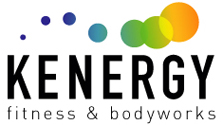Therapeutic Massages
ART
ART is a patented, state of the art soft tissue system/movement based massage technique that addresses problems with muscles, tendons, ligaments, fascia and nerves. Headaches, back pain, carpal tunnel syndrome, shin splints, shoulder pain, sciatica, plantar fasciitis, knee problems, and tennis elbow are just a few of the many conditions that can be resolved quickly and often permanently with ART. These conditions all have one important thing in common: they are often a result of overused muscles.
Repetitive stress injuries
Soft tissue disorders
SWEDISH MASSAGE
The most common type of massage is Swedish massage therapy. It involves soft, long, kneading strokes, as well as light, rhythmic, tapping strokes, on topmost layers of muscles. This is also combined with movement of the joints. By relieving muscle tension, Swedish therapy can be both relaxing and energizing.
Trigger Point Therapy
Trigger points or trigger sites are described as hyperirritable spots in skeletal muscle that are associated with palpable nodules in taut bands of muscle fibers. Trigger point practitioners believe that palpable nodules are small contraction knots[ambiguous] and a common cause of pain. Compression of a trigger point may elicit local tenderness, referred pain, or local twitch response. The local twitch response is not the same as a muscle spasm. This is because a muscle spasm refers to the entire muscle entirely contracting whereas the local twitch response also refers to the entire muscle but only involves a small twitch, no contraction. The trigger point model states that unexplained pain frequently radiates from these points of local tenderness to broader areas, sometimes distant from the trigger point itself. Practitioners claim to have identified reliable referred pain patterns, allowing practitioners to associate pain in one location with trigger points elsewhere.
Posture Analysis
Augmented Reality Assisted Assessments 4 view, 2 view assessments for supported iOS devices as well as Quick Screen, and Seated Analyses anywhere and anytime and always in palm of your hand with PostureScreen!
Body Composition Analysis
2D photographic anthropometric body composition analysis with LeanScreen! Or use true 3D scanning with Structure Sensor for true 3D body composition analysis along with reported measurement details!
Remote Client Assessments
Use RemoteScreen to allow clients to remotely and securely upload photos and videos for your professional analysis!
Functional Movement Assessment
SquatScreen allows for fast, objective and functional movement assessments with auto-suggested corrective exercises for your clients!
Exercise Prescriptions
PostureScreen, LeanScreen, and SquatScreen all have direct integration with the WebExercises platform to allow mobile exercise prescriptions directly from the applications! (Webexercises account required)
GRaston TECHNIQUE
Soft tissue injuries can be debilitating and frustrating. Graston Technique® (GT) therapy is successful in effectively treating all soft tissue conditions, whether they are chronic, acute or post- surgical. GT therapy can help you enjoy life again.
Our unique technique and instruments enable the treatment of scar tissue and fascial restrictions during rehabilitation that allows for faster rehabilitation and with greater success when the goal is restoring range of motion, eliminating pain, and restoring normal function.
Deep Tissue
Designed to relieve severe tension in the muscle and the connective tissue or fascia. This type of massage focuses on the muscles located below the surface of the top muscles. Deep tissue massage is often recommended for individuals who experience consistent pain, are involved in heavy physical activity, such as athletes, and patients who have sustained physical injury. It is also not uncommon for receivers of Deep Tissue Massage to have their pain replaced with a new muscle ache for a day or two. Deep tissue work varies greatly. What one calls deep tissue another will call light. When receiving deep tissue work it is important to communicate what you are feeling.
Sports Massage
Developed to help with muscle systems used for a particular sport, sports massage uses a variety of approaches to help athletes in training -- before, during, or after sports events. You might use it to promote flexibility and help prevent injuries. Or, it may help muscle strains, aiding healing after a sports injury.
Post Physical Therapy
In Conjunction with Orthopedic Doctors and Surgeons, Chiropractors, Physical Therapists, Personal Trainers and Acupuncturists, Ken is able to take in and use all of their specialties, comments, suggestions and direction to treat each client issue as it pertains to the life and physical nature and needs of each person as a whole moving entity. If you have information from past body workers or therapists, as well as, any types of imaging (X-ray/MRI/etc.)
Tech Neck
The basic definition is the name given to neck soreness from endlessly sitting in front of a computer, typing on a laptop or using any handheld technology.
What are the symptoms of tech neck?
Headaches, stiff necks, neck spasms, and pain between your shoulder blades are common complaints. Some people say they have a hard time looking up after looking down for a long time. In severe situations you could get numbness or tingling or weakness that goes down into your arms because of a pinched nerve in your neck.
How can tech neck cause more serious problems?
What happens initially is that the muscles have to strain to hold your head up. But the muscles tighten, and, as they do, they put more pressure on the discs. That makes the discs wear out faster, and as the discs wear out faster, they can bulge or even rupture. If the ruptured disc pinches a nerve, you can get pain, weakness, or numbness in the arm, which may end up requiring surgical treatment.(New York Presbyterian)
Testimonial
“If you do basic activities then perhaps a basic therapist is all you need, and Ken can do that as well. But his magic is that he can do the weird injuries, the ones that aren’t necessarily textbook. And for that, he’s worth every penny you spend with him. Oh and he genuinely cares. ”


